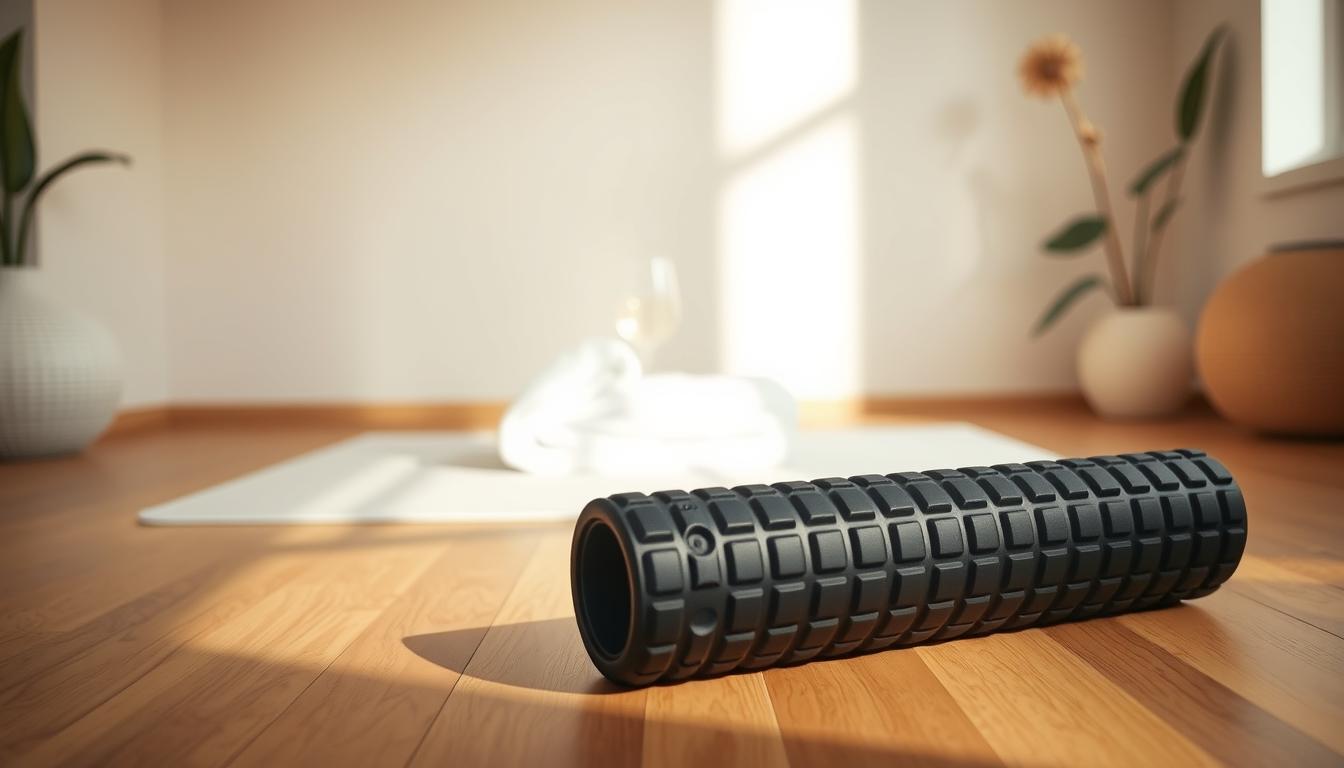Many people work at desks for long hours, leading to neck and shoulder pain. It is important to do exercises for these areas to manage pain and stay healthy at work. Adding specific exercises to your daily routine can enhance your posture and lessen discomfort. This article talks about important ergonomic tips and exercises for easing pain in these critical spots, making work more comfortable.
The Importance of Neck and Shoulder Health for Desk Workers
For desk workers, keeping your neck and shoulders healthy is very important. Sitting for long hours and looking at computers can cause a lot of shoulder pain and neck tension. Bad posture makes these problems worse, leading to discomfort that can lower productivity and harm workplace wellness.
The trapezius and scalene muscles play a big role in this issue. When desk workers don’t pay attention to their posture, these muscles get strained. This strain causes ongoing pain and tiredness. Knowing about these muscles helps in managing and lessening the pain.
It’s crucial to take steps to better neck and shoulder health not only to ease current pain but also to stop future problems. Keeping good posture and being active regularly can improve overall health at work. Taking care of these body parts greatly affects both physical and mental performance on the job.
Common Causes of Neck and Shoulder Pain in Office Jobs
Office workers often deal with neck and shoulder pain. This pain comes from posture issues and doing the same movements over and over. They feel this discomfort because they sit at computers for many hours.
When you don’t sit straight, it can lead to problems. If your head sticks out in front of your shoulders, it can make your neck hurt. This also messes up how your muscles balance, making the pain worse.
Looking at screens too much also can make your posture worse. This can lead to your muscles getting tired and stiff. For instance, if your chest muscles are too tight, they pull your shoulders forward. This stops your upper back muscles from working right. This problem, called Upper Crossed Syndrome (UCS), is typical for people with desk jobs. Not taking breaks can make muscle stiffness and other common office pains worse.
To fight this discomfort, being aware of how you sit is important. Just knowing about posture can help avoid a lot of tension. Doing exercises that focus on these problems can really help your neck and shoulder feel better.
Power of Stretching and Strengthening Exercises
Stretching and strength training help keep you healthy, especially if you sit at a desk a lot. Stretching makes you more flexible and helps your muscles work better in daily life.
Adding strength exercises to your workouts makes your muscles stronger. It helps you sit and stand straighter. Doing both helps prevent injuries and eases pain from sitting too long.
Doing these exercises often helps your muscles work better and keeps you stronger. Try to stretch and do strength exercises a few times each week. This helps you avoid pain from sitting too much at work.
Dynamic Warm-up Exercises to Prepare Your Muscles
Warming up is key for anyone active, especially for those who sit at desks all day. Adding dynamic warm-up exercises to your daily routine helps get your muscles ready for action. These exercises boost blood flow and enhance flexibility. They include neck rolls, shoulder rolls, and arm circles. You should do each one for 30 seconds to a minute.
These exercises do more than just warm up muscles. They make muscles ready for exercise, help joints work right, and prevent injuries. If you’re looking to start, try out these warm-up moves:
- Neck Rolls: Gently move your head in circles, relaxing your neck.
- Shoulder Rolls: Raise your shoulders up to your ears and roll them back in circles.
- Arm Circles: Stretch your arms out and circle them slowly, making the circles bigger over time.
Doing these dynamic stretches before working out can make a big difference. They reduce pain and injury risks from sitting too much. Stick with these exercises to move smoothly from sitting all day to being more active.
Static Stretches: Best Practices for Desk Job Relief
Adding static stretching to your daily routine can really help if you have a desk job. Doing these stretches, especially after exercises, helps make you more flexible and supports muscle healing. To get the most out of it, hold each stretch for 10 to 20 seconds. This helps your muscles stretch properly without losing strength.
Some good static stretches are:
- Pectoral stretch, which helps open up tight chest muscles.
- Upper trapezius stretch, ideal for easing neck and shoulder tension.
Doing these stretches regularly helps your muscles recover better and makes working at a desk more comfortable. Just spending a few minutes every day on static stretching can boost your health and flexibility a lot.
Neck and Shoulder Exercise Combo for Desk Jobs
Spending long hours at a desk? Mixing neck relief with shoulder strengthening is key. These exercises ease common aches from sitting too much. They keep your shoulders strong, cut down neck pain, and help you sit better.
Effective Stretches for Neck Relief
Adding neck stretches to your day can really help lessen tension. Here are some good ones to try:
- Lateral Neck Stretch: Gently tilt your head to one side, bringing your ear toward your shoulder. Hold for 15-30 seconds and repeat on the other side.
- Levator Scapulae Stretch: Turn your head to one side, then look down toward your armpit. Keep the opposite shoulder down. Hold for 15-30 seconds and switch sides.
Strengthening Exercises for Shoulder Support
Working at a desk means you should keep your shoulders strong. Here are exercises for better shoulder support:
- Wall Angels: Stand with your back against a wall, arms raised to form a “Y”. Slowly slide your arms down to form a “W” shape, keeping contact with the wall.
- Face Pulls: Use a resistance band anchored at shoulder height. Pull the band towards your face while keeping your elbows high, engaging the shoulder blades.

Creating an Ergonomic Workspace to Prevent Pain
Having an ergonomic workspace is key to avoiding neck and shoulder pain, especially for people working at desks. A well-planned office setup keeps you comfortable and healthy, reducing discomfort during long work hours. Making the right changes can greatly improve your physical health.
Essential parts of workplace ergonomics are:
- Chair and Desk Height: Your chair should let your feet stay flat on the floor, and your desk should be at elbow height. This helps keep your posture straight.
- Monitor Positioning: The top of your monitor should be at eye level. This helps prevent neck and shoulder strain.
- Keyboard Setup: Place your keyboard so your arms are relaxed and close to your body. This reduces stress on your shoulders.
By making these ergonomic changes, you create a healthier work setting. This boosts productivity and employee happiness. A well-designed workspace helps you keep good posture all day, helping stop pain.
Tips for Incorporating Exercises into Your Daily Routine
Making time for daily workouts in your busy schedule can greatly improve your health. To better manage your time and include important neck and shoulder exercises, try these health tips.
- Set reminders on your phone or calendar for regular breaks. A few minutes of stretching can do wonders for preventing stiffness.
- Utilize standing desks or adjustable workstations. These can promote better posture while allowing you to incorporate movements throughout your day.
- Designate specific times within your day for incorporating stretches. Scheduling mini workouts ensures accountability, making it easier to stick to your routine.
- Engage colleagues by forming an exercise group. This can help maintain motivation while creating opportunities for socializing.
By prioritizing effective time management and small changes, you can blend helpful exercises into your day. This focus on health can combat the negative effects of sitting too long, leading to a healthier work life.
Conclusion
Putting your neck and shoulder health first is key if you sit at a desk a lot. Doing both stretching and strengthening exercises helps a lot. It makes your time at work healthier.
Working out does more than just ease tension. It helps you sit better and get more done. Changing your work area to fit you better also helps fight the problems from sitting too much.
Keeping up with regular exercises means you’re looking after your health. Being mindful of how you sit and your workspace boosts your life quality and work.



